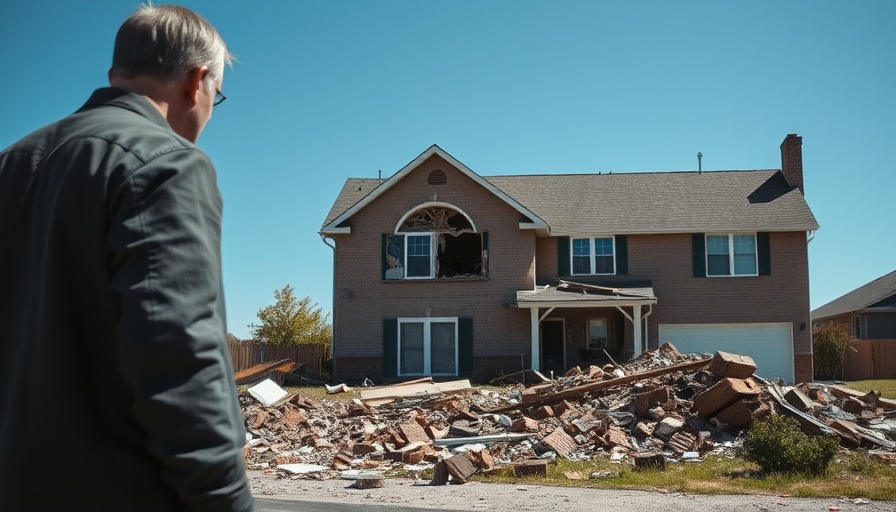
Understanding the Silence Before the Storm
Just moments before a deadly tornado roared through St. Louis, citizens found themselves in an unsettling quiet—a silence where ominous wailing sirens should have echoed, warning residents of the imminent danger. This unfortunate failure marked one of the most shocking moments of a storm that would tragically result in five lives lost and dozens injured. The absence of the warning system not only left the community vulnerable but has sparked a controversy that now holds local officials accountable.
What Went Wrong? An Investigation Prompted
In the aftermath of the disaster, St. Louis Mayor Cara Spencer placed the city's emergency manager, Sarah Russell, on administrative leave, prompting an investigation into the failure of the emergency systems. The sirens, designed to alert citizens of severe weather conditions, were never activated. Reports reveal that a backup mechanism—controlled by the Fire Department—was also broken, compounding the city’s failure to provide crucial notifications.
Mayor Spencer emphasized that the Emergency Management Agency is meant to protect citizens, stating, "The office failed to do that in the most horrific and deadly storm our city has seen in my lifetime." This stern critique led to immediate changes in the protocol that determines how the warning systems are activated—changes aimed to prevent such lapses in the future.
Community Response and Emotional Toll
The effect of this disaster reached far beyond physical damages and injury; it struck at the emotional core of the community. Families whose loved ones were taken by the storm are left grappling with not only their loss but also profound anger over the preventable nature of the tragedy. City officials confirmed that one victim was killed while outside during the onslaught, a detail that heightens the grief felt among residents.
The impact of such tragedy is often felt deeply, as local families reflect on their vulnerability in the face of nature’s fury and their reliance on emergency services to act decisively in moments of crisis.
Historical Context: A Call for Better Preparedness
This isn’t the first time cities across the United States have faced criticisms for their emergency preparedness during natural disasters. Examples like Hurricane Katrina and other tornado outbreaks serve as stark reminders of the importance of effective, reliable warning systems. If a city that boasts technological advancements fails to alert its citizens during an emergency, it raises serious questions about what can be done to ensure accountability and improvement in these critical systems.
The Future: Moving Beyond This Crisis
In the wake of this catastrophe, it becomes essential to address the vulnerabilities in emergency management strategies comprehensively. Key recommendations may include regular inspections of automated systems, community awareness programs regarding emergency response, and improved training for emergency personnel. The goals are not just about preventing future loss of life but also about rebuilding public trust in local government capabilities.
Conclusion: A Call to Action for Better Safety Measures
The tragedy witnessed in St. Louis must serve as a catalyst for change in emergency response protocols nationwide. Citizens, city officials, and community leaders must come together to ensure that no one else has to endure such a preventable disaster. It is critical to demand accountability not just to honor those lost but also to pave the way for better, safer communities.
As residents engage in active conversations about emergency preparedness, let us advocate for systemic change that safeguards everyone against the elements. Visit community forums and local government meetings to ensure your voice is heard and prioritized in future planning efforts.
 Add Row
Add Row  Add
Add 




Write A Comment